Area(s) Manga artist Role Manga artist | Children 2 Name Naoko Takeuchi | |
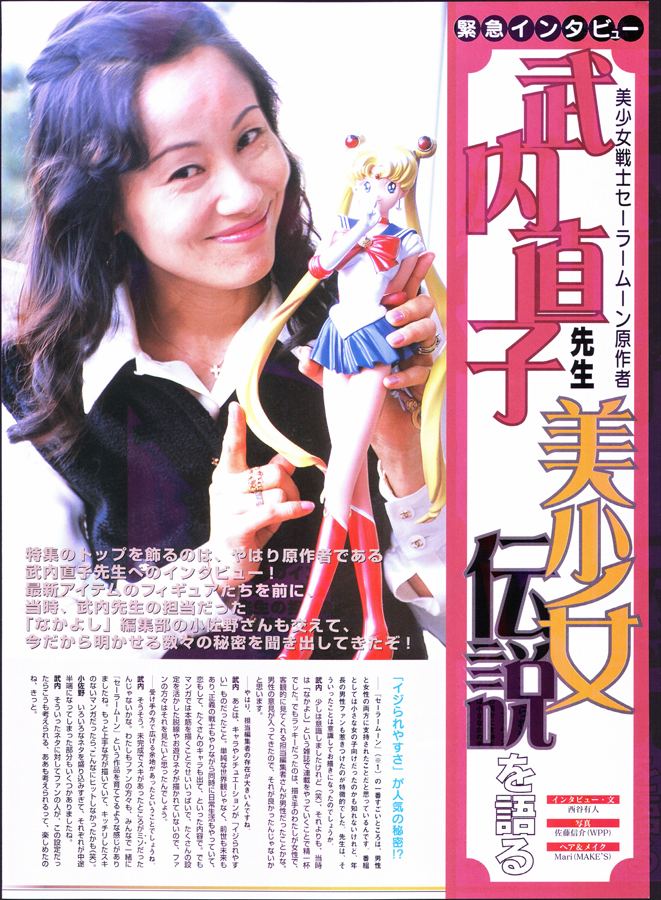 | ||
Books Sailor Moon: Vol. 4, Sailor Moon Stars, Meet Sailor Moon Movies and TV shows Sailor Moon, Pretty Guardian Sailor Mo, Sailor Moon Super S, Sailor Moon R the Movie: Pr, Sailor Moon S the Movie Similar People Yoshihiro Togashi, Kotono Mitsuishi, Toru Furuya, Kunihiko Ikuhara, Michie Tomizawa | ||
My naoko takeuchi manga collection
Naoko Takeuchi (武内 直子, Takeuchi Naoko, [ta.keꜜ.u͍.tɕi naꜜ.o.ko] born March 15, 1967) is a Japanese manga artist. She is best known for her manga series Codename: Sailor V (1991–1997) and Pretty Soldier Sailor Moon (1991–1997).
Contents
- My naoko takeuchi manga collection
- Sailor moon manga naoko takeuchi
- Early life
- 19861997 Early work and success
- 1997present
- Anime
- Illustrations
- Written books
- Song lyrics
- Awards
- References
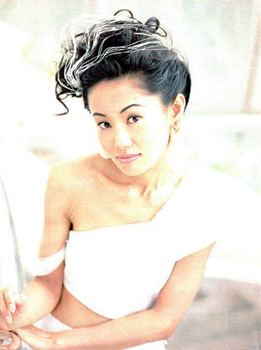
She earned the 2nd Nakayoshi Comic Prize for Newcomers in 1985 for Yume ja Nai no Ne and the 1986 New Artist award for Love Call. Her next manga Sailor Moon, went on to become one of the most popular and successful manga around the world, with over 35 million copies sold worldwide. In 1993, she earned the Kodansha Manga Award for the series. Overseas, Sailor Moon's anime adaptations have been more successful than the manga and are credited with boosting Japanese animation's popularity in the Western world.
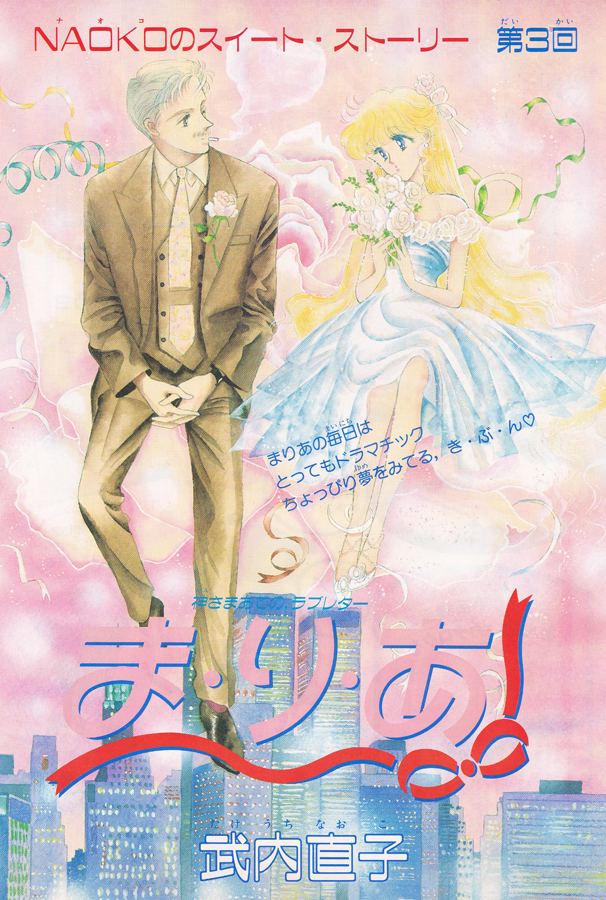
Sailor moon manga naoko takeuchi
Early life
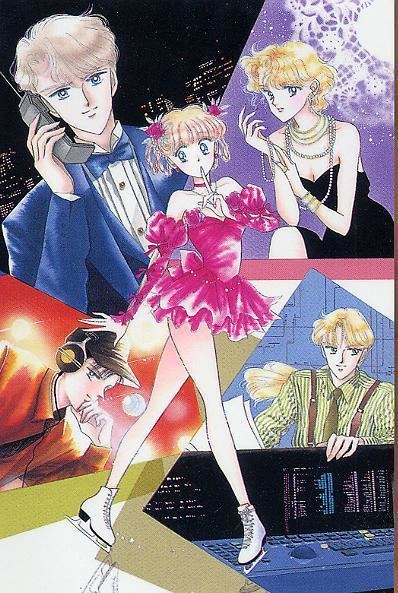
Takeuchi was born in Kofu to Kenji and Ikuko Takeuchi; she has a younger brother, Shingo. She used the names of her family members in the manga of Sailor Moon, and mentions this in interviews and in several comic-strips which she produced in place of author-notes.

Takeuchi attended Kofu Ichi High School. She wore sailor suit uniforms and joined the astronomy and manga clubs. This experience later influenced her work, Sailor Moon, as well as her previous manga such as Love Call and Rain Kiss. She wanted to become a manga artist at this age. However, Kenji suggested that Takeuchi should find another profession if she did not make it as an artist, so she went to university to study chemistry.

Takeuchi graduated from Kyoritsu University of Pharmacy, where she received a degree in chemistry and became a licensed pharmacist. Her senior thesis was called "Heightened Effects of Thrombolytic Actions Due to Ultrasound".
1986–1997: Early work and success

Before becoming a manga artist, Takeuchi worked as a miko at the Shiba Daijingu shrine near her university. This experience later became the basis for one of her characters in Sailor Moon, Rei Hino.
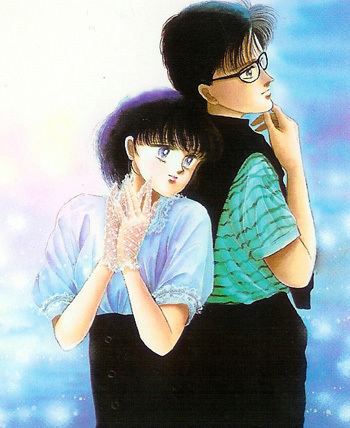
After graduating from Kyoritsu University of Pharmacy, Takeuchi entered the manga industry by submitting Love Call to Kodansha at the age of 19, which received an award. She worked steadily on one-shot pieces until writing Maria, which was published in Nakayoshi from early to mid-1990. She based this work, her first serial comic, loosely on Daddy-Long-Legs and on her friend Marie Koizumi, who helped her write it.
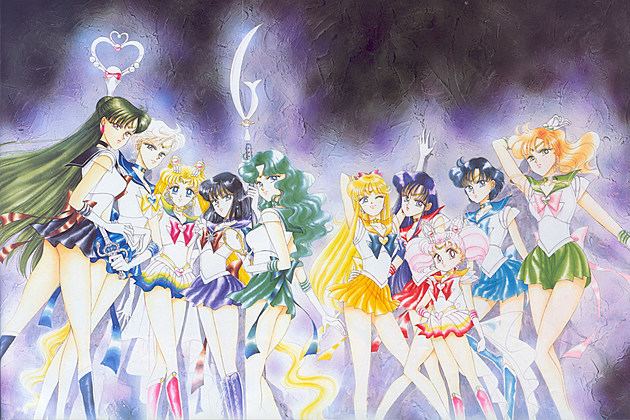
After completing Maria, Takeuchi worked on the ice-skating series The Cherry Project which was serialized in Nakayoshi from late 1990 to 1991. While working on The Cherry Project, Takeuchi wanted to do a manga on outer space and girl fighters. Her editor, Fumio Osano, asked her to put the fighters in sailor-suits. This concept would later become a one-shot called Codename: Sailor V, which would later begin serialization in RunRun. When Toei Animation planned to adapt her manga into an anime series, she reworked Sailor V and added four other super heroines.
In December 1991, Nakayoshi began serializing Sailor Moon, and became an instant hit. The success encouraged Takeuchi to work on both Sailor Moon and Sailor V from 1991 to 1997. However, RunRun was canceled with the November 1997 issue, and the planned Sailor V anime adaptation was canceled with it. During that 6-year period, she produced 52 chapters that were collected in 18 volumes. Moreover, the success of the manga led to two anime adaptations, three animated films, a live-action adaptation, numerous video games, and mega-merchandising.
At the series' end, Takeuchi worked on PQ Angels for Nakayoshi. This gained a fair amount of popularity but was canceled due to Kodansha losing seven pages of her manuscript. Takeuchi said that Toei Animation had the manuscript, therefore it would have been possible to create an anime adaptation of the series.
Takeuchi's own studio is called "Princess Naoko Planning" (PNP). Takeuchi established PNP to manage her properties, mainly Sailor Moon. Later the studio encompassed Yoshihiro Togashi's work as well and showed up in the credits for such anime as Level E and Hunter × Hunter. Its name shows up on several musical credits such as Shin Kaguya Shima Densetsu.
1997–present
Following the loss of seven pages of Takeuchi's PQ Angels manuscript, Osano departed Kodansha and the plans for the Materials Collection were canceled. Takeuchi departed Kodansha for Shueisha.
On August 13, 1998, Takeuchi made her first appearance in the United States at the San Diego Comic-Con International convention for three days. That same year, she published the first Sailor Moon art book since her departure from Kodansha, Sailor Moon Infinity Collection Art Book with limited releases.
In her short comic strip Princess Naoko Takeuchi Back-to-Work Punch!!, Takeuchi met Yoshihiro Togashi at a Weekly Shōnen Jump meeting hosted by Kazushi Hagiwara, and had a meeting arranged between them by voice actress Megumi Ogata. She collaborated with Togashi as an assistant (doing screentone) and as a manager on volume 1 of Hunter × Hunter. However the work and the demands proved more than she had expected, and Takeuchi left Shueisha as a result.
Around this time Takeuchi conceived the idea for a one-shot called Toki*Meka, which eventually turned into Toki*Meca. Togashi had a similar idea at the same time as her, but never fully brought it to fruition. He helped somewhat with Toki*Meka at this point in developing the idea by drawing some concept sketches, which Takeuchi showed in Toki*Meca volume 1.
Togashi and Takeuchi married in 1999. From this marriage, the couple have two children: a son, born in January 2001, and another child, born in 2009.
After Kodansha's rights to Sailor Moon expired, Takeuchi returned to the publisher in 1999 to develop and publish the Materials Collection. She also began serializing Love Witch, but was cancelled. Takeuchi also started to work on the reprints of Sailor Moon and Sailor V. She also published Toki*Meka in Nakayoshi
In 2003, Takeuchi became heavily involved in producing Pretty Guardian Sailor Moon, a tokusatsu television series based on Sailor Moon. Takeuchi had an interest in learning more about the anime industry. This culminated in the creation of Pretty Guardian Sailor Moon. The series plot displays a plot heavily reliant on the manga and also explores many themes that the manga was unable to explore. She showed up at the official conference with a fist up, meaning "good luck", in Act Zero.
After production of Pretty Guardian Sailor Moon ended in 2004, Takeuchi continued work on Toki*Meca. During the manga's serialization, Osano returned as her editor. Takeuchi also worked more closely with managing PNP and gave talks to college students. At the same time, she wrote a children's book titled Oboo-nu- to Chiboo-nu- as a birthday present to her son. (Togashi illustrated the children's book. She made mention of it in the back of volume 1 of Toki*Meca.) She still works on the website, updating it about once a month with new flash animations or profiles.
In 2012, it was announced that a new Sailor Moon anime adaptation was in development. With it, Takeuchi started a Kanzenban version of the manga which was announced by Osano, which will include fixed mistakes from the past and new covers for the manga. Color pages are also included for the title pages. There was also an artbook announced and she has been working on merchandise which is announced by Osano on his Twitter feed.
Anime
Illustrations
Written books
Song lyrics
Takeuchi wrote the lyrics for a number of songs featured in the Sailor Moon anime and live-action series. Though mainly character-based image songs, they include a few theme songs. These include:
Awards
Takeuchi has won several awards, including the 2nd Nakayoshi Comic Prize for Newcomers for Yume ja Nai no Ne in 1985. She also won for "Love Call", which won Nakayoshi's New Artist award which debuted in the Nakayoshi Deluxe September 1986 issue. In 1993 she won the 17th Kodansha Manga Award for shōjo for Sailor Moon.
